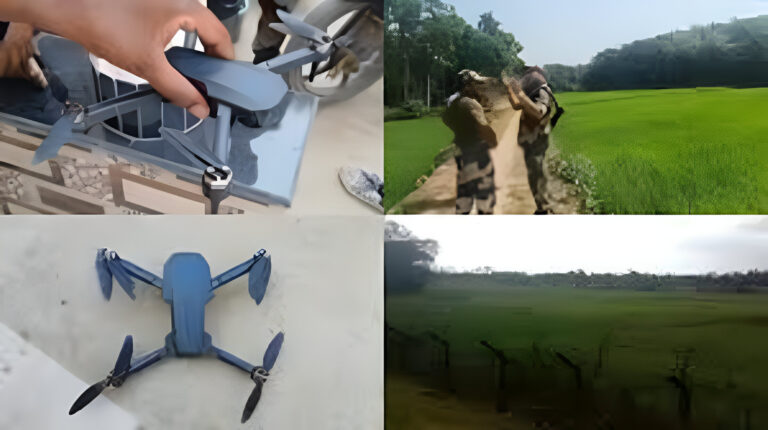Rally by students & educators demanding disturbance‑free educational zones
Short Summary
Hundreds of students, teachers, and education advocates marched across Manipur’s valley districts—including Imphal East, Imphal West, Kakching, Thoubal, and Bishnupur—on July 5, 2025. Organized by the Coordinating Committee on Disturbance‑Free Educational Zone Demand (involving 16 student and teacher groups), the protest called for a secure, disruption‑free learning environment. Demonstrators demanded an end to militant extortion, school politicization, and codified protection—like legislated minimum 220 teaching days per year. They also urged reforms against corruption, nepotism, and favoritism in the education sector
1. Introduction: Why Students and Teachers Took to the Streets
Hey there! Ever wondered what it looks like when students and teachers unite with purpose? Picture this: a sea of hopeful faces, determined slogans, and placards demanding basic—but profound—rights: a safe, focused classroom, free from fear and interruption. That’s exactly what happened in Manipur on July 5, 2025. This article dives deep into that powerful rally, exploring the reasons behind it, the voices behind the movement, and why it matters for the future of education in the Northeast.
2. The Rally at a Glance
- What: A mass rally marking the 18th Disturbance‑Free Education Zone Demand Day
- Who: Students, teachers, education advocates from 16 organizations (e.g. DESAM)
- Where: Major valley districts—Imphal East & West, Thoubal, Kakching, Bishnupur
- When: Saturday, July 5, 2025
- Why: To protest extortion by militant groups, government inaction, and disruptions in education
3. What’s a “Disturbance‑Free Education Zone”?
Think of your classroom as sacred territory. A place where lessons are taught, dreams are born, and futures shaped. But in Manipur, that sanctuary often gets violated—extorted, disrupted, used as political platforms, or targeted by armed groups. The rallyers aren’t asking for luxuries—they’re demanding the basics: a safe, orderly, focused space to learn and teach without external fear.
4. The Roots of the Movement
4.1 A Tradition Since 2008
This isn’t a flash protest. It’s decades in the making. Every July 5 since 2008, stakeholders have come together to advocate for safe learning spaces. While symbolic, it’s proven stagnant—prompting louder and bigger demonstrations this year .
4.2 The Monthly Extortion Cycle
Militant groups have allegedly demanded “donations” from schools and colleges, turning education into a revenue source backed by fear. Teachers and students have paid up or faced threats—changing education into a hostage scenario .
4.3 Government Response—or Lack Thereof
Despite police action and helpline numbers, the protestors say extortion and interference continue unabated—even in central Imphal. Their rally is as much against militants as it is against perceived government apathy
5. What They Want: The Rallying Demands
- ➤ Stop Militant Extortion: No more forced “donations” from institutions
- ➤ Guarantee 220 Academic Days: Align schooling with national benchmarks
- ➤ No Politicization of Education: Keep students out of political agendas
- ➤ Root Out Corruption & Nepotism: In recruitment and administration
- ➤ Legislate a Safe Learning Environment: Declare schools “disturbance‑free zones”
This isn’t pie‑in‑the‑sky. It’s reasonable. It’s necessary. And it’s still pending.
6. District-Wise Rally Details
- Imphal West/East: March began at Thangmeiband Thau Ground, ended at Imphal College, Kwakeithel
- Thoubal & Kakching: Gathered at BASU Ground, Khangabok, then to Thoubal College
- Bishnupur: Moved from DSA Ground to Thiyam Leikai Community Hall
These were peaceful spreads of solidarity, echoed across different parts of the state.
7. Voices from the Frontline
- A teacher said: “We want to teach and study without fear. Militants must stop using education as a tool for money.”
- One student pointed out: “Some groups…call it a donation, but it’s actually forced. Some even threaten schools if they don’t pay.”
These quotes hit hard. They bring home the urgency—education should build futures, not bankroll extortionists.
FAQs
Q1: What is the “Disturbance-Free Educational Zone Demand Day”?
A: A symbolic annual protest since July 5, 2008, when students and teachers across Manipur rally for safe, uninterrupted learning.
Q2: What exactly are militant “donations”?
A: Forced payments covertly demanded by armed groups from educational institutions—often accompanied by threats or fear, equating to extortion.
Q3: Why 220 academic days?
A: That’s India’s national benchmark. Many institutions here fall far short due to disturbances, impacting learning outcomes.
Q4: Have these protests triggered policy changes?
A: Not yet. While previous campaigns (e.g., poster drives in 2024) raised awareness, demand-day protests aim to translate awareness into actionable reforms.
Q5: What can students and parents do after the rally?
A: Stay engaged—follow government responses, join committees, support awareness campaigns, and hold institutions accountable for implementing demands.



